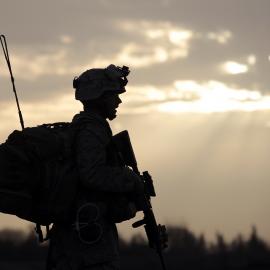Not one of the articles in your package “Tomorrow’s Military” (September/October 2016) addresses the impact of climate change on the U.S. armed forces or the world in which they will operate. Yet in a 2015 report to Congress, the U.S. Department of Defense noted that “climate change is an urgent and growing threat to our national security, contributing to increased natural disasters, refugee flows, and conflicts over basic resources such as food and water. These impacts are already occurring, and the scope, scale, and intensity of these impacts are projected to increase over time.”
Climate change threatens to flood coastal bases, incapacitate troops and equipment, and destabilize U.S. allies. Responding to these challenges could become a full-time activity for parts of the military, undermining their capacity to carry out traditional missions. The Department of Defense already obliges the U.S. military to consider its resilience to the effects of climate change in all its operations. Surely, those who write on the military’s future can do so as well.
MICHAEL KLARE is Five College Professor of Peace and World Security Studies, Amherst College.
The package of essays on U.S. defense policy and national security strategies in the latest issue of Foreign Affairs is welcome and timely, but some of the essays suffer from omissions or faulty assumptions.
As Andrew Bacevich (“Ending Endless War”) argues, the vitality and durability of the U.S. alliance system developed over the past 70 years are rapidly eroding. And yet he seems to assume that a world in which the United States abandoned its commitments to its allies in Europe and Asia would not jeopardize U.S. security. His argument ignores the implications for the proliferation of nuclear weapons and the reemergence of the types of regional rivalries that characterized the period before the current alliance system.
Michael O’Hanlon and David Petraeus (“America’s Awesome Military”), meanwhile, underestimate the need for more robust and expansive investments in force structure to ensure continued U.S. influence in Asia. What is required is a demonstrated ability to enter the contested maritime domain with forces capable of successfully challenging Chinese anti-access/area-denial capabilities while credibly providing cover to U.S. allies. This means acquiring longer-range deep-strike aircraft and missiles operating from well-defended aircraft carriers, antisubmarine warfare capabilities sufficient to manage the underwater domain, and antiaircraft capabilities and missile defenses adequate to protect carriers and bases in Asia.
The challenges ahead may require the United States to rebalance the traditional budget shares among the services, as difficult as the defense establishment created by the 1986 Goldwater-Nichols Act will make doing so.
PHILIP A. DUR, Rear Admiral, U.S. Navy (retired).
